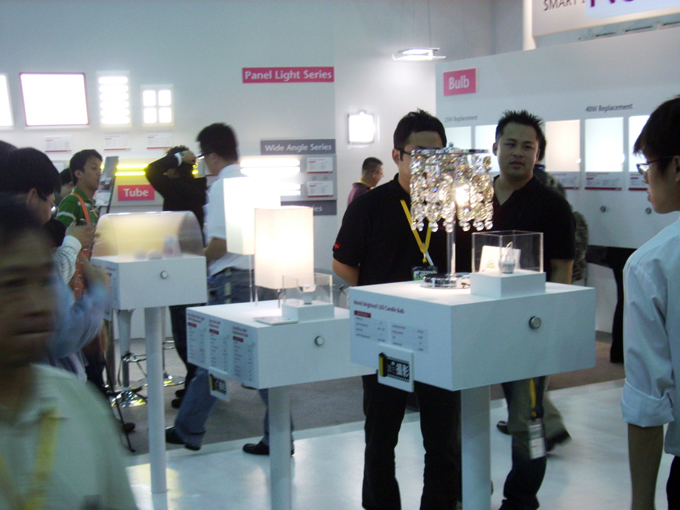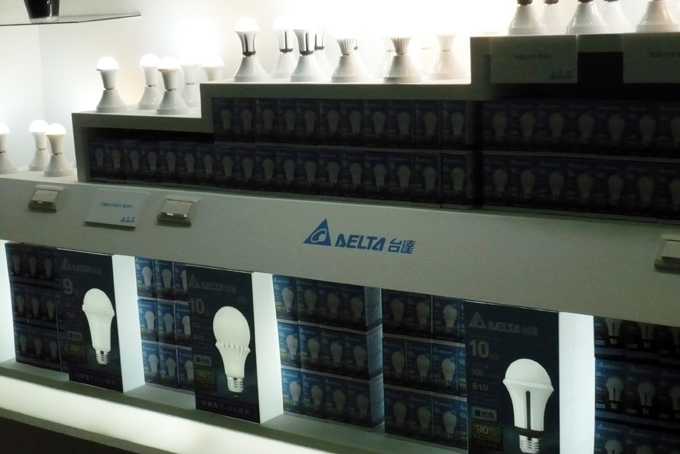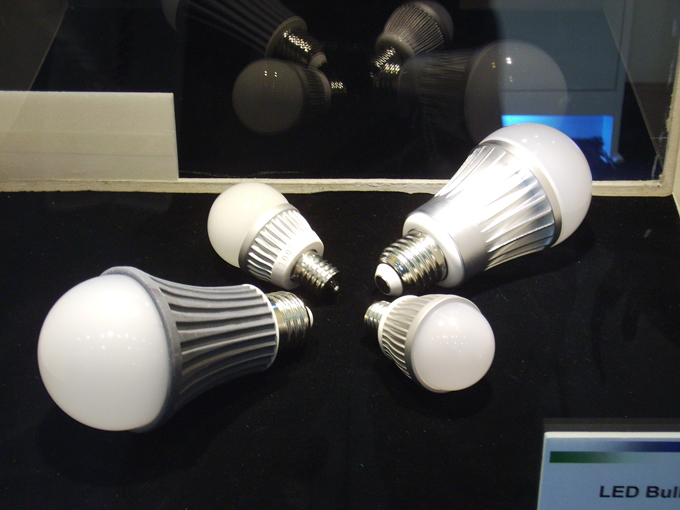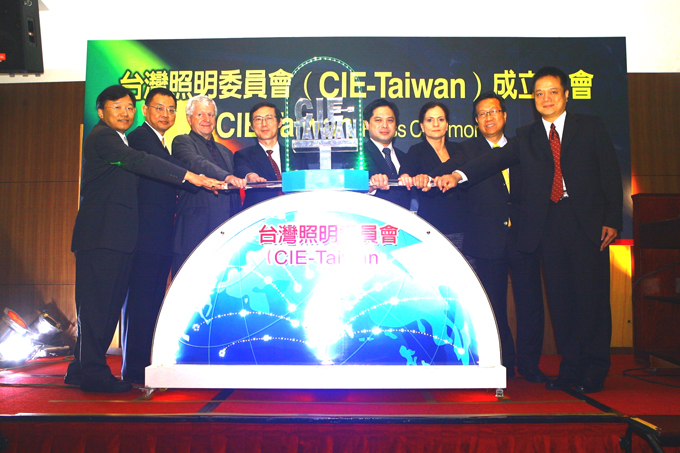LEDinside Issues 10 Forecasts for LED Industry in 2013
China relies on talent poaching to offset brainpower shortage
2013/05/29 | By Ken LiuAlthough the LED industry underwent many extraordinary developments worldwide last year, market research organization LEDinside, a subsidiary of the Taiwan-headquartered TrendForce Corp., is upbeat about the industry’s development in 2013 and offers 10 forecasts.

Expired patents as rejuvenation
LEDinside feels that the industry will see new life as many crucial patents held by international players continue to expire. Cree Inc., Phillips Lumileds Lighting Co., Osram Opto Semiconductors GmbH, Nichia Corp., and Toyoda Gosei Co., Ltd. hold most of international LED patents on everything from basic materials and equipment to packaging and application.
Invention patents are valid for 20 years while patents for outside design and applications are valid for 10 years globally, meaning patents registered in 1990 have begun expiring from 2010, with many related to white LED technologies. And from 2012 to 2014, patents associated with phosphor formula will also expire.
In China, LEDinside estimates that at least 70% of the registered patents will expire should patent lawsuits launched by international players escalate. China’s locally-developed LED patents are, in principle, adjusted or amended from international players’, according to LEDinside.

Higher LED penetration
LEDinside thinks that lower prices, maturing technology and higher recognition will accelerate LED penetration in lighting market in 2013, with manufacturers motivated to increasingly use LED in lighting fixtures to replace conventional lighting source. Over the next two years, LED penetration will spill over into other lighting applications from general lighting.
More business closures in China
Although China’s LED-lighting industry will continue expanding to keep up with local market growth, with LED downlight and projection lamp estimated to see 30% market penetration or so, respectively, and produce sales of around RMB1 billion (US$158.7 million) this year, LEDinside thinks the expansion will worsen the oversupply plaguing the sector that is shutting down many makers in China.
Industry watchers point out that although China has cultivated a huge number of homegrown epitaxy-wafer makers with subsidies, the number will dwindle to less than 30 over the next few years.

Also while China’s homegrown MOCVD (metal organic chemical vapor deposition) chamber makers have been aggressively developing presence in the market hoping to break up the monopoly held by international players, their efforts are in vain since even imported equipment is still sitting idle at many of the epi-wafer makers.
China’s substandard LED packagers are on the cusp of closure faced with expansion of their mega peers at home.
Downtrend in LED chip prices sap earnings
LEDinside believes that although the LED industry will produce an estimated US$12.4 billion in revenue worldwide this year, up 12% from 2012, mostly due to continuous growth in LED-lighting and LED-lit handheld device demands, excessive supply will still plague the industry in the years to come.
The organization blames oversupply mostly on desperate capacity expansion at China’s epi-wafer makers and other LED supply chains, with the vicious cycle to continue with many to start more underselling to attract business and cut idle capacity, hence undermining earnings.
Citing the latest statistics, LEDinside points out that prices of sapphire substrate, on which LED composites are grown, and LED chips have sunk over one third year on year in the first quarter this year.
The organization predicts structural oversupply to remain in China’s LED industry throughout this year, to keep downward pressure on prices. Also, oversupply will likely facilitate horizontal integration of upstream with midstream sectors or vertical integration of the two sectors with downstream sector.
Poaching to offset brainpower shortage
China’s LED industry is clearly short on brainpower in the epi-wafer sector. Many manufacturers have sheepishly jumped on the epi-wafer bandwagon only to realize they lack talents to operate the extensive German VEECO-made and AIXTRON-made equipment, an issue often overcome by poaching well-trained talents from Taiwanese or South Korean competitors with hefty benefits.
Growing competition to encroach on mutual markets
LEDinside expects Taiwan’s and China’s LED industries to encroach on mutual markets, with some manufacturers in China increasingly muscling in on Taiwanese competitors after upgrading techniques while some Taiwanese manufacturers are vigorously tapping the mainland market.
China’s homegrown No.1 chipmaker, San’an Optoelectronics Co., Ltd., for instance, has bought into Taiwan’s Formosa Epitaxy Inc. (FOREPI) to raise its production capacity. Industry executives predict that San’an will dethrone Epistar Corp. of Taiwan as the world’s No.1 LED chipmaker by volume sometime this year.
Before the San’an’s acquisition of FOREPI stocks, Taiwan’s LED makers, including Lextar Electronics Corp., Wellypower Optotronics Corp., Huga Optotech Inc., and Epistar, had felt that their Chinese competitors will inevitably encroach on their turf and prepared themselves for the challenge.
LEDinside thinks that Taiwan’s epi-wafer or LED-lighting manufacturers may partner with China’s LED manufacturers to create synergy to tap the mainland’s huge demand for LED commercial and outdoor lighting, also to make the most of Taiwan’s quality LED technology and established LED-lighting standards.
Intensifying competition in China
The huge market potential in China will draw more international LED players to build presence in the world’s No.2 economy. For instance, Osram Opto Technology has built a packaging factory in Wuxi; Philips has opened an LED lighting demonstration field in Chengdu; and General Electric (GE) has opened a China customer innovation center in Xi’An.
Besides, LEDinside thinks that incentives offered by Chinese authorities and relatively low labor cost are other advantages attracting international LED-lighting players.
China’s homegrown manufacturers are motivated to move inland due to increasing costs in coastal provinces, more attractive investment terms offered by inland governments and prospering inland cities, where simmering rivalry will ensue when local makers meet global players.

Improving luminous efficacy
Luminous efficacy is the name of the game in LED-lighting competition and no one can afford to lose. LEDinside points out that Cree has been able to mop the floor with competitors in the LED lighting sector all because its LEDs break efficacy records. In 2012, the technological gap has widened further among competitors.
Many manufacturers are developing GaN homoepitaxial technology, which is estimated to exceed the GaN sapphire epitaxial technology in efficacy performance.
LED packager Soul Semiconductor claims its nPola single-chip package has achieved 500lm of flux without disclosing its power rate, incurring doubt about its efficacy.
LEDinside thinks the highest commercialized efficacy will stay at around 160lm/W this year.
GaN-on-Si technology to take center stage LEDinside feels that Si-based substrate will evolve realistically this year to challenge sapphire substrate. Toshiba announced on Dec. 14, 2012 that it had released a family of white LEDs using GaN-on-Si processing technology that will soon enter mass production in LEDs.
The market consulting firm estimates GaN-on-Si LEDs to take a single-digit percentage of the LED-substrate market this year, ready to vie for market share with sapphire and silicon carbide substrates.
Faster industry standardization worldwide
Major LED players worldwide are accelerating standardization of the industry by installing verification regimes to regulate quality and functionality, by over the past few years releasing certifications and standards as well as forming industrial alliances to guide the industry toward healthy development.
European Union has published the No 1194/2012 to regulate design on eco-system of directional lamps, LED lamps and related equipment. Also, the EU is regulating LED lighting under the ENEC Mark, which verifies safety of electrical products including lighting.
In North America, all testing standards for LEDs are consistently updated to fit new products. Among the industry standards are IES LM-79, IES LM-80, IES TM-21 and IES LM-82, not to mention standards produced by Underwriters Laboratories Inc. (UL).
The U.S. Energy Star program, co-developed by Department of Energy and Environmental Protection Agency of the U.S., has been adopted by Australia, Canada, European Union, Japan, New Zealand, and Taiwan.
The Japanese Ministry of Economics, Trade and Industry has ruled that all imported LED light bulbs and LED lighting fixtures must pass the Product Safety of Electrical Appliance & Materials (PSE) verification system.
China has announced an assessment standard on solid-state lighting energy saving technologies to regulate LED lighting equipment, including streetlight, tunnel light and indoor light, as well as LED lighting projects at airports, railway stations, and light rail transit stations.

